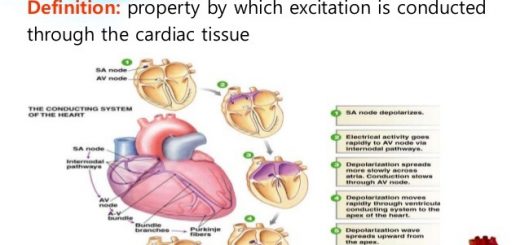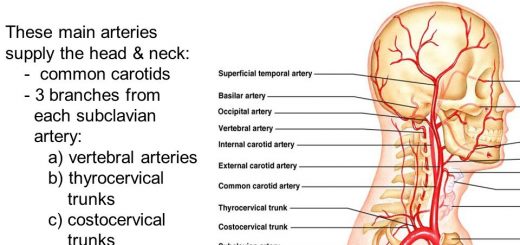Peripheral nerve (Nerve trunk) types, structure, function and Response of neurons to injury
Peripheral nervous system is divided into the somatic nervous system & the autonomic nervous system, It consists of the nerves and ganglia outside the brain and spinal cord. It can connect the CNS to the limbs and organs, essentially serving as a relay between the brain and spinal cord and the rest of the body.
Peripheral nerve (Nerve trunk)
The nerve trunk (e.g. median & sciatic nerves) is formed of parallel groups of nerve fibers surrounded by connective tissue sheath.
Histological structure of T.S section of a peripheral nerve
A. Connective tissue sheath has supportive as well as nutritive functions as it carries many blood vessels to the nerve trunk. It is formed of:
- Epineurium: dense connective tissue sheath covering the whole nerve trunk from the outside. It consists of longitudinally-arranged collagen fibers. Fat cells are frequently seen in close association with the nerve trunk.
- Perineurium: cellular sheath surrounding each bundle (fascicle) of the nerve fibers. It consists of concentric layers of epithelial-like fibroblasts joined together by tight junctions and are bounded by the external lamina. This layer forms the blood-nerve barrier to prevent the passage of harmful macromolecules into the nerve fibers.
- Endoneurium: a thin layer of reticular fibers surrounding each nerve fiber separately.
B. Nerve fibers: The majority of nerve trunks are mixed containing myelinated and unmyelinated nerve fibers. The nerve fibers are aggregated in well-circumscribed bundles (fascicles).
With H & E stain, a myelinated nerve fiber is formed of a central eosinophilic axon surrounded by an empty space representing the myelin sheath. The neurilemma and Schwann cell nucleus from the outer layer around the myelin. With osmium tetroxide stain, the only stained structure in a myelinated nerve fiber is the myelin sheath which appears as a black ring.
Neuroglia
They are the supporting cells of the nervous system. Neuroglia cells are mainly branching cells that bind neurons together and to other elements e.g. blood vessels. They could be studied histologically by immunohistochemical staining using antibodies against Glial Fibrillary Acidic Protein, other methods use gold or silver impregnation technique. The neuroglial cells include:
I. Neuroglia in the CNS, these are:
1. Astrocytes (macroglia)
Histological features: large, stellate-shaped cells. They have multiple radiating processes. each ends by foot-like expansion applied on the surface of nearby blood vessels.
Function:
- Supportive function.
- Nutritive function.
- A metabolic function that influences neuronal survival and activity.
- Help in the formation of the blood-brain barrier as their processes completely envelop the continuous capillaries of the CNS.
2. Microglia or mesoglia
- Histological features: small, oval cells. They have fine cytoplasmic processes arising from the two poles. The cell body and the processes have minute spines.
- Function: they are members of the mononuclear phagocyte system. Their phagocytic function includes bacteria, apoptotic and malignant cells.
3. Oligodendrocytes
- Histological features: small cells with few short processes as compared with astrocytes. They are aligned in rows between the axons in the white matter.
- Function: they form the myelin sheath in the white matter of CNS.
4. Ependymal cells
- Histological features: they are epithelial-like cuboidal cells, lining the brain ventricles and the central canal of the spinal cord. Their apical surfaces have microvilli, while their basal surfaces have numerous infoldings and lake a basement membrane.
- Function: they are responsible for the formation of cerebrospinal fluid.
II- Neuroglia outside the CNS include:
- Schwann cells.
- Satellite cells in the ganglia.
- Pituicytes in the posterior lobe of the pituitary gland.
Response of neurons to injury
If an injury occurs e.g. traumatic cut or crushing in nerve fiber, a complex sequence of events is expected in the form of:
- The proximal segment that maintains its continuity with the perikaryon will not degenerate.
- The distal segment that will be separated from the nerve cell body will undergo Wallerian degeneration (anterograde degeneration).
- The perikaryon of injured nerve fiber will undergo retrograde degeneration.
Wallerian degeneration
The degeneration takes place in the axon and myelin sheath but not in Schwann cells. Nerve fibers and myelin degenerate totally and phagocytosed by the macrophages from the surrounding connective tissue.
Retrograde degeneration
It is the degeneration of the perikaryon after its Nerve fiber injury.
It includes:
- Dissolution of Nissl substance (chromatolysis) with a subsequent decrease in cytoplasmic basophilia.
- Swelling of perikaryon. The cell draws its processes and becomes spherical, with the migration of the nucleus to the periphery of the cell body.
- Fragmentation and disappearance of the neurofibrils, Golgi apparatus, and mitochondria.
Regeneration of nervous tissue
Regenerative changes after injury of neurons:
- Neurons are static cells, unable to divide, so if an injury occurs in the perikaryon, the nerve cell will die and never be replaced. Recent researches are now directed to neural stem cells in order to replace nerve cells lost or damaged by neurodegenerative disorders e.g. Alzheimer and Parkinson disease.
- If an injury occurs in the nerve fibers of PNS, the degenerative changes of neurons (retrograde degeneration) stop and neurons can regenerate as nerve fibers can regenerate due to the presence of Schwann cells. However, extensive and severe injury of the peripheral nerve may lead to failure of regeneration and death of the nerve cell body.
- If an injury occurs in the Nerve fibers of CNS, nerve fibers fail to regenerate, as Schwann cells are absent and death of the neurons occur.
Regenerative changes after injury of nerve fiber in PNS:
– In the distal stump:
- Schwann cells proliferate to give rise to a solid cellular tube.
- Rows of Schwann cells serve to guide the newly growing axon sprouts.
– In the proximal stump:
- The axon of the proximal stump grows and branches, forming several axon sprouts that progress in the direction of the Schwann cell tube.
- Axons that succeed to grow along the tube reach their destination to re-establish their sensory and motor connections. Microsurgical suturing is recommended to help the approximation of the cut ends of the injured nerve fibers and enhance regain of function.
- If the axon sprouts fail to reach the Schwann cell tube (e.g. when there is a gap between proximal and distal stumps or when the distal segment is removed as in case of amputation of a limb), the newly growing axon sprouts may form a painful amputation neuroma.
Nervous tissues function, structure, types of Neurons & Nervous fibers
Autonomic nervous system, Reflex action types & Autonomic ganglia function
Functions of Sympathetic nervous system & Role of the sympathetic in emergencies
Chemical transmission in Autonomic nervous system & Control of autonomic functions
Homeostatic control mechanisms, Positive & Negative feedback mechanisms
Excitable Tissues & factors involved in production of RMP (Resting membrane potential)



